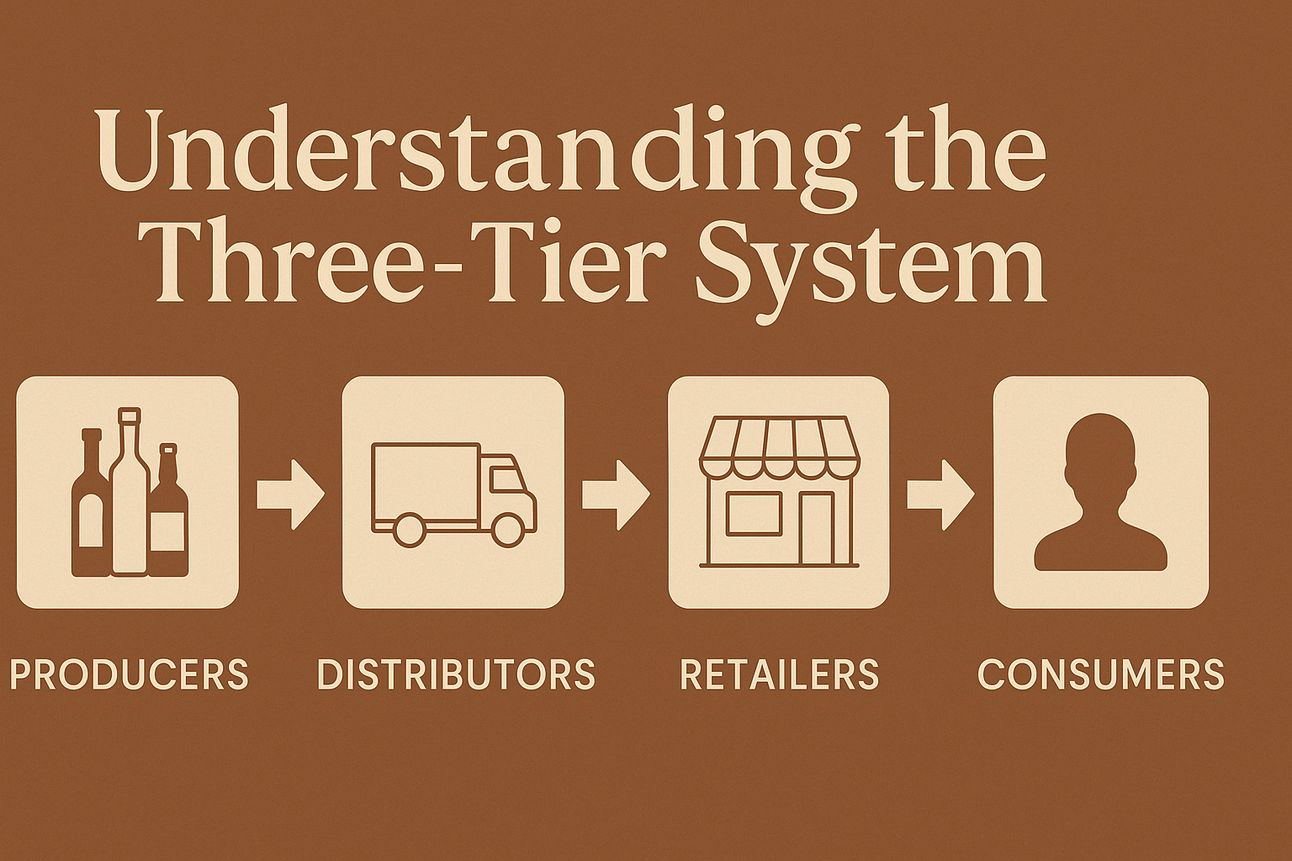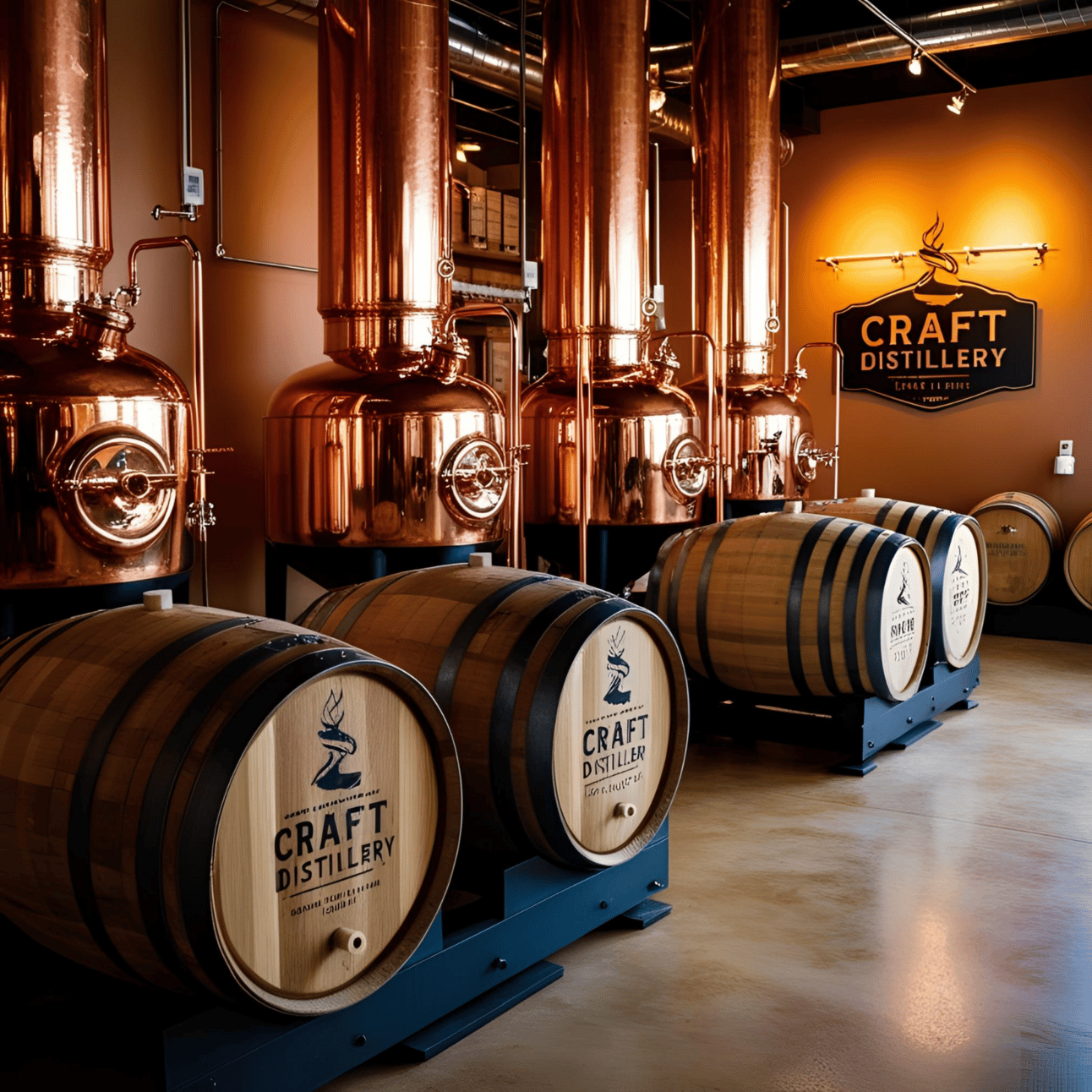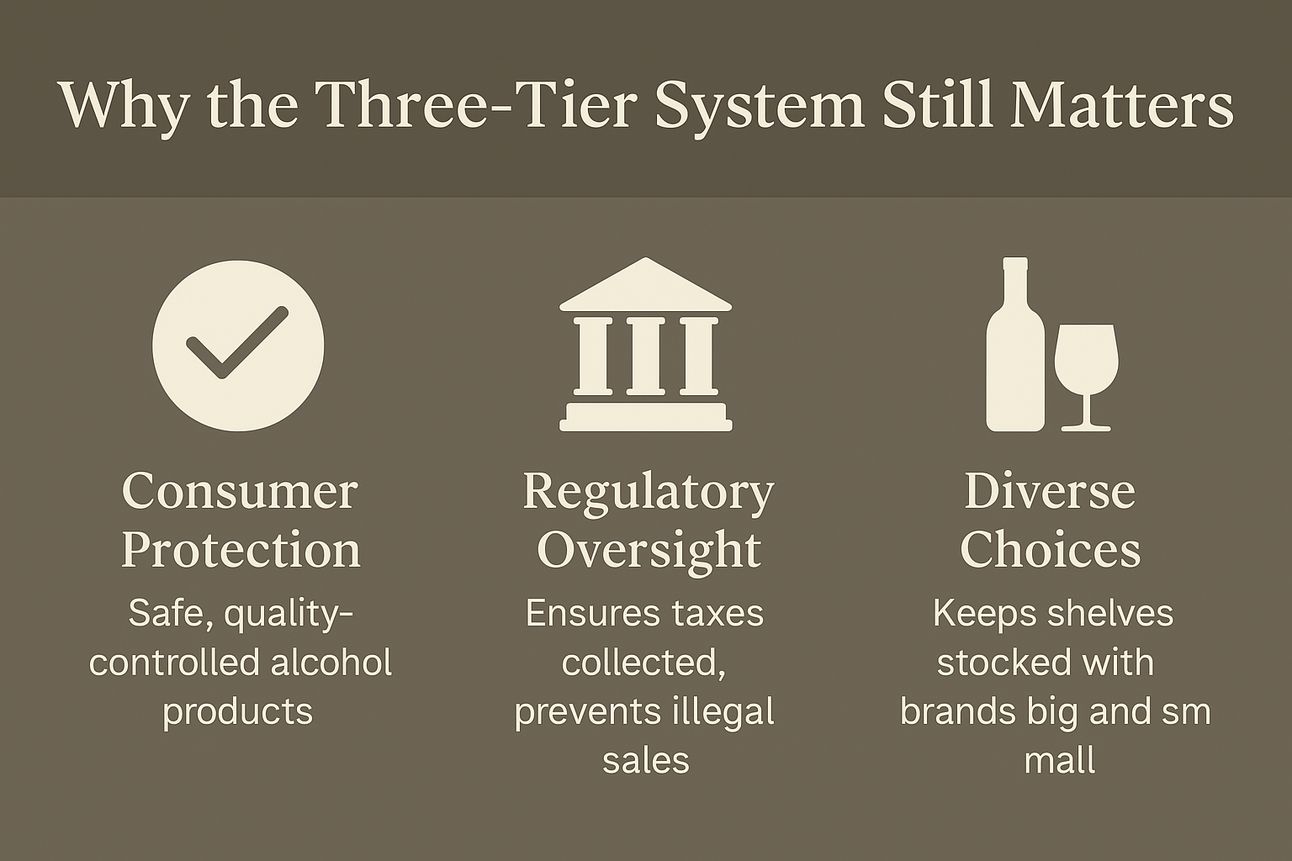- Consumer & Market Trends Newsletter
- Posts
- From Barrel to Bottle
From Barrel to Bottle
How Liquor Distribution Works and Why It Still Matters
Ever wondered how that bottle from your favorite liquor distributor or alcohol distribution company ends up on your table? The journey of alcohol-from distilleries and breweries to your local bar or liquor store-is a fascinating blend of tradition, regulation, and innovation. Whether you’re a fan of craft spirits, searching for whiskey distributors, or just curious about the world of alcoholic beverage distributors, here’s how it all works.
The Three-Tier System: The Backbone of Alcohol Distribution

Three-Tier System was established at the end of Prohibition, the U.S. has relied on the three-tier system to keep the alcohol distribution industry fair, safe, and well-regulated. Here’s the breakdown:
Producers: These are your distilleries, breweries, and wineries-think gin distillery, bourbon distillery, or wine & spirits distributor. They make the product but can’t sell directly to most retailers. Producers include both domestic makers and importers of foreign beverages. At this level, products are manufactured and then sold to a distributor, often at a significant markup12.
Distributors/Wholesalers: The heart of the system. Liquor distribution companies, spirits distributors, and wholesale liquor distributors buy from producers and deliver to retailers. Distributors are responsible for the "chain of custody," ensuring products are pure, fresh, and safe2. They range from small local warehouses to multi-state operations selling millions of cases per year3.
Retailers: Your favorite liquor store, bar, or restaurant. They buy from major alcohol distributors and sell to you. Retailers can be on-premise (bars, restaurants) or off-premise (liquor stores, supermarkets, convenience stores)23.
Key Facts & Fun Tidbits
The system helps governments collect billions in taxes from alcoholic beverage distributors every year, funding public services12.

Consumer Choice: By separating tiers, you get access to a wide variety of brands, from wine and beer distributors to tequila distribution specialists. This keeps the market competitive and diverse2.
State-by-State Rules: Each state has its own regulations, so US liquor distributors might operate differently than southern liquor distribution companies. This means selection, pricing, and even availability can vary dramatically depending on where you live18.
Direct-to-Consumer Trends: Online sales and delivery apps are shaking up the old model, especially for craft distilleries and boutique spirits distributors. However, these are also subject to state laws and can face significant hurdles8.
Ancient Origins: Beer is the world’s oldest beverage, dating back 5,000 years, and alcohol production may have started over 12,000 years ago5.
Champagne Pressure: The pressure in a champagne bottle is 90 PSI-three times more than a car tire!5
The Role of Distributors: Gatekeepers and Guardians
Alcohol Distributors are the crucial middlemen in the alcohol supply chain. Their main responsibilities include:

Maintaining Product Integrity: Distributors ensure that alcohol is stored, handled, and transported safely from producer to retailer, keeping it fresh and uncontaminated2.
Regulatory Compliance: They must follow strict state and federal regulations, tracking every bottle to prevent illegal sales and ensure taxes are paid2.
Market Access: Distributors help small and large brands reach retailers, but the system can favor big producers who can afford large-scale distribution7.
Did you know? There are over 20,000 licensed alcohol beverage wholesalers in the U.S., but the number of traditional beer distributors has dropped from 4,595 in 1980 to about 3,000 in 20204.
Challenges & Criticisms
Small Craft Distillery producers Face Hurdles:** It’s tough for new brands to get noticed by large liquor distributors or major liquor distributors, making shelf space at top alcohol distributors competitive. Small distilleries often struggle to expand beyond their home state due to complex regulations and high costs8.

Complex Regulations: The three-tier system is over 80 years old and can feel outdated, especially with the rise of e-commerce. Each state acts as its own market, making national expansion a logistical headache for small producers8.
Markup at Every Tier: Each step adds cost. For example, a winery might sell a bottle for $10, a distributor marks it up to $20, and a retailer might sell it for $30 or more. Restaurants can mark it up even higher8.
Big Brands’ Advantage: Some large producers have found ways to maintain their own distributor networks, giving them more control and market power-sometimes at the expense of smaller brands7.
My Take: Why the System Still Matters (But Needs a Refresh!)

If I had to weigh in, I’d say the three-tier system has its perks-it keeps things safe, organized, and gives us lots of choices from local alcohol distributors to largest spirits distributors. But it can feel like a dinosaur in today’s world of one-click shopping and craft everything. I’d love to see more flexibility for small producers and modern delivery models, while still keeping the checks and balances that protect consumers. After all, the best system is one that evolves with the times!
Resources for Aspiring Distributors and Consultants
Looking to break into the industry as a liquor consultant, alcohol consultant, or start your own alcohol distribution company? Here’s where to begin:
TIPS Alcohol Certification & Training: For responsible beverage service and compliance.
National Alcohol Beverage Control Association (NABCA): For policy, regulatory updates, and state-by-state information.
Sttark: Custom Labels & Packaging: For branding and packaging solutions.
Firewater Firm: Spirits Branding & Distribution: For spirits industry consulting and distribution strategies.
Maryland Alcohol, Tobacco, and Cannabis Commission (ATCC): Example of a state regulatory body.
iStock: Alcohol Distribution Images: For royalty-free images to enhance your materials.
"The three-tier system are the legs of the U.S. alcohol marketplace and without them, it would not stand to serve consumers, place responsibility at the forefront, or set the global-standard."
– Wine & Spirits Wholesalers of America
Cheers to understanding the journey behind every sip, and to the distributors, consultants, and innovators who keep the world of spirits moving!
Sources
Need Help with Sales & Distribution? CLICK HERE